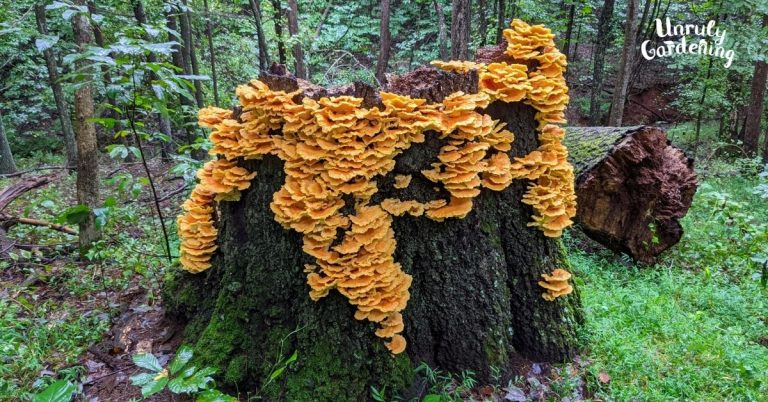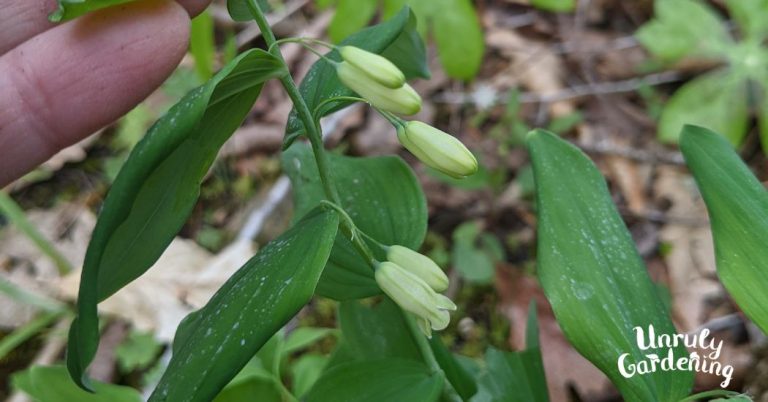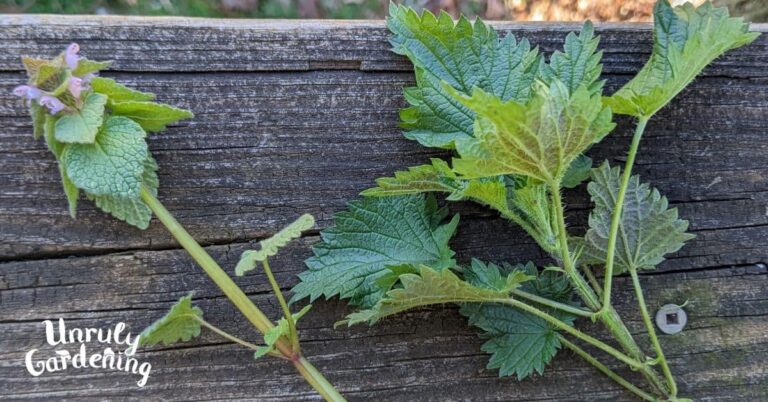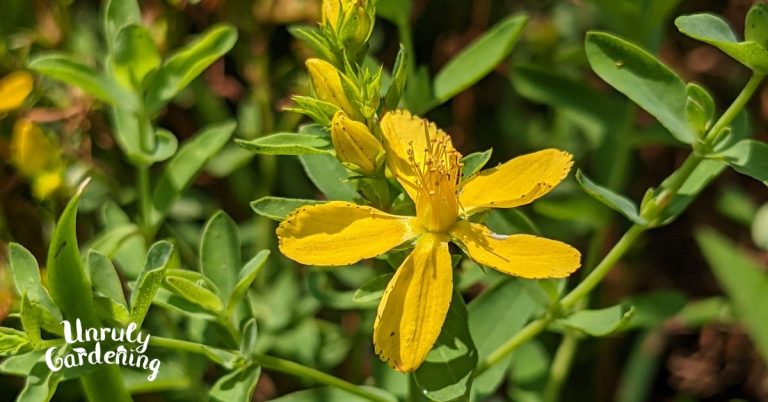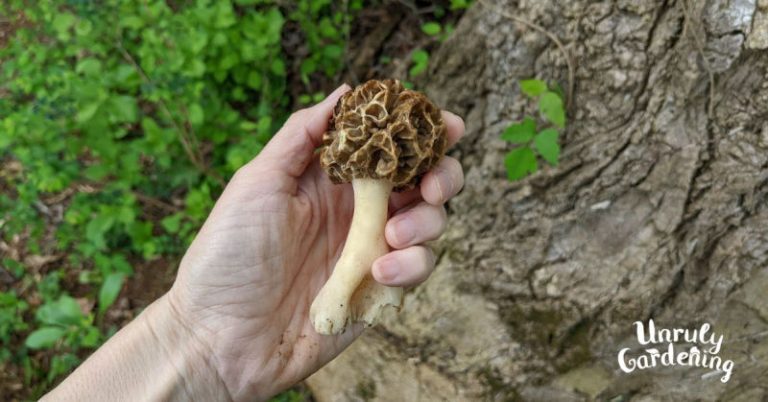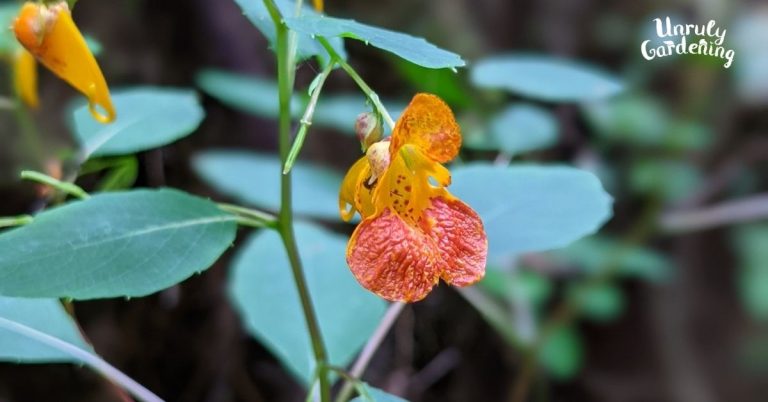Ragweed vs Goldenrod – The Differences
Ragweed and goldenrod get mixed up so often, but it’s not because they look alike!
It’s because goldenrod has a showy yellow bloom right around the time ragweed pollen is making everyone sneeze. Goldenrod gets all of the blame, but it’s actually used by folks to help with seasonal allergies!
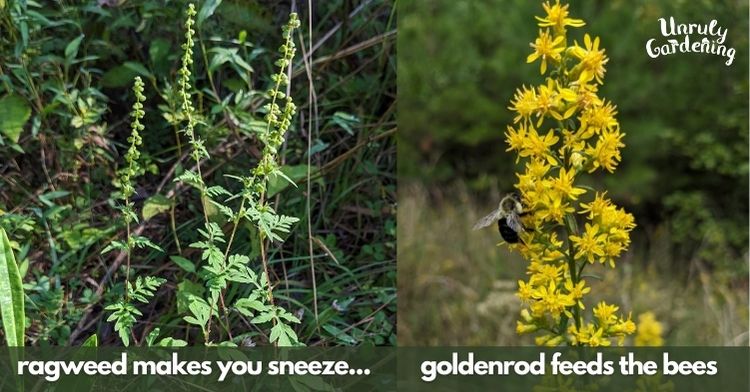
In this article, you’ll learn about ragweed (Ambrosia spp.) vs goldenrod (Solidago spp.) so you can confidently tell them apart.
Both plants have their place and uses in the overall ecosystem, but just remember: Ragweed makes you sneeze, while goldenrod feeds the bees!
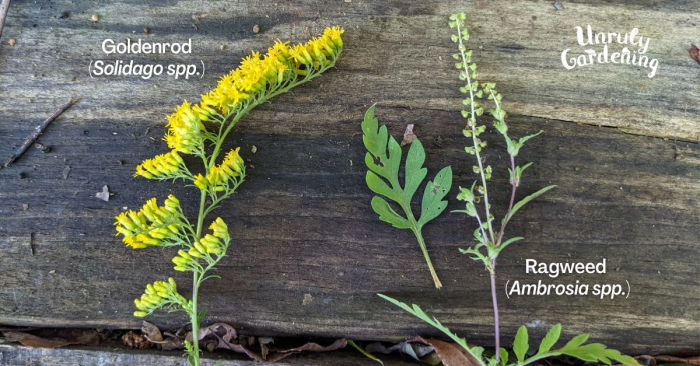
For more information about harvesting, drying, and storing goldenrod, please see our article:
Foraging Goldenrod (Photos, Tips & Lookalikes!)
The Differences Between Goldenrod & Ragweed
These two plants don’t look the same, but they can still be confused for each other. Let’s cover their differences so you can easily tell them apart!

What Ragweed Looks Like
First off, the entire ragweed plant is pretty plain looking – even the flowers don’t stand out!
Everything on ragweed is green, or whitish-green, or yellow-green. You won’t ever see bold, bright yellow flowers on ragweed.
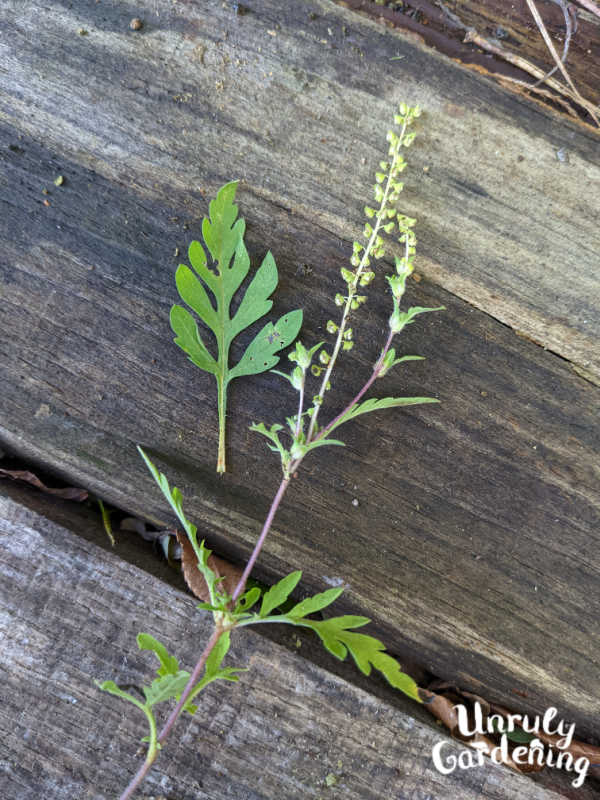
Ragweed Flowers
There are male flowers and female flowers on ragweed.
The long spikes that you see on top of the plant contain an abundance of male flower clusters, while the female flowers are found near the base of each spike.

Ragweed Pollen
The flowers produce a massive amount of pollen in late summer and early fall.
This pollen is lightweight and easily wind-borne. Just one plant can spread a lot of pollen around!
Ragweed Leaves
Common ragweed leaves are green and deeply lobed.
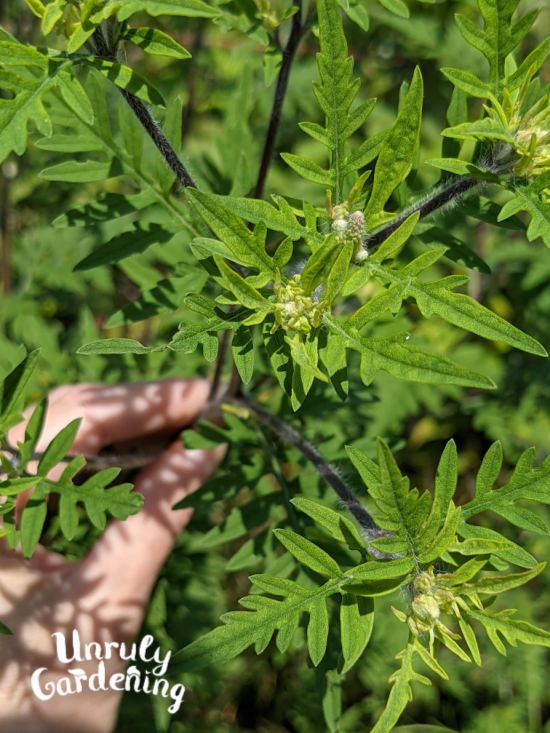
NOTE: Giant ragweed – Ambrosia trifida – a species we don’t have growing around our home, has a simple leaf type with 3 to 5 lobes. If your suspected ragweed leaves don’t look like the ones shown in this article, double check against photos from this article about Giant Ragweed by Oklahoma State University.
Ragweed Stems
The stems of ragweed can be purplish, and can start branching from the bottom of the plant.

In contrast, goldenrod has a single straight stem that may start branching at the top of the plant (if it branches at all).
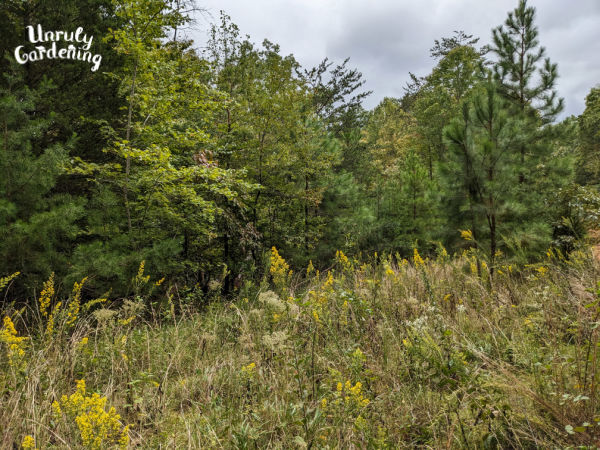
What Goldenrod Looks Like
Solidago species, or goldenrods, have bright yellow flowers that start blooming in late summer to early fall, depending on where you live.
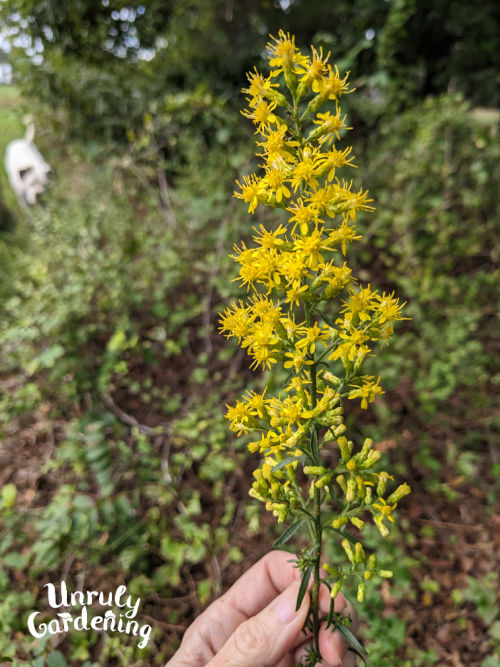
Goldenrod Flowers
Shaped like a big plume or pyramid shape, goldenrod blooms are made up of a bunch of individual small flowers clustered together.

Goldenrod Pollen
Unlike ragweed, the pollen in goldenrod flowers is heavy and isn’t wind-blown all over the place. Goldenrod relies on insects to pollinate the flowers, so it doesn’t have really light, air-borne pollen.
Goldenrod flowers also produce a lot less pollen overall than ragweed does.
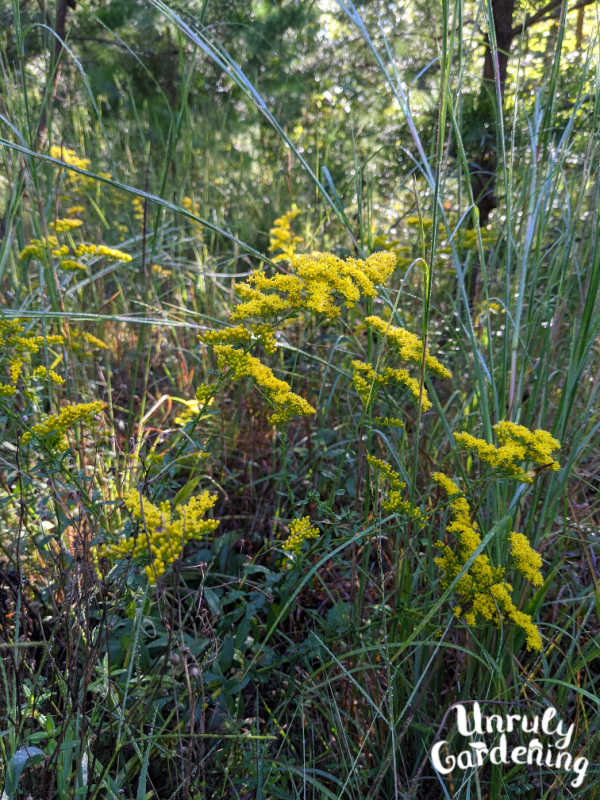
To get a good nose full of goldenrod pollen, you’d literally have to stick your nose in the flowers and take a big sniff. (Not necessarily recommended, because some people can still be allergic to that kind of pollen!)
Goldenrod Leaves
The leaves are long and narrow (lance shaped) and they alternate along the stem.
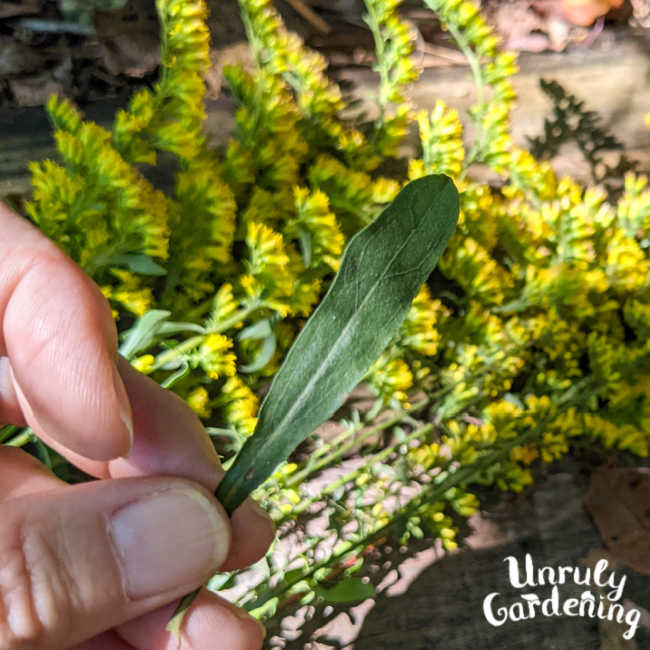
Goldenrod Stems
The single stems of goldenrod grow straight up from the bottom of the plant, then can branch at the top of the plant. (In contrast, ragweed starts branching at the bottom of the plant.)
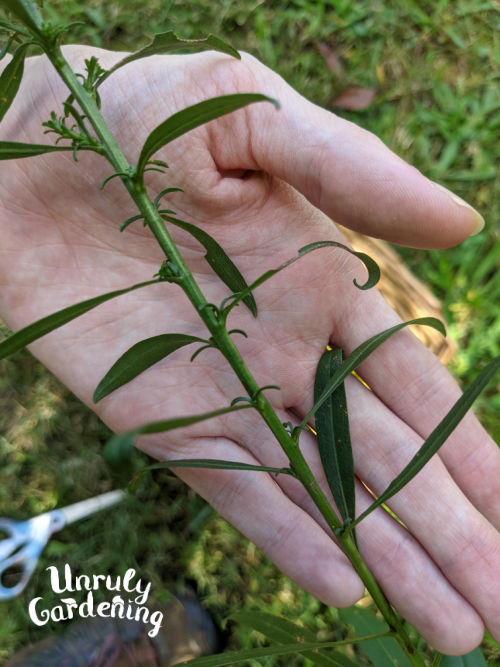
What Good is Ragweed?
Ragweed is a native plant that’s sometimes purposely planted in quail habitats and other restorative land management projects.
It’s a top quail food source and valuable brood habitat plant for turkey, quail, and small game birds. Ragweed produces a lot of seeds that helps feed songbirds, such as cardinals and bluebirds, during the winter months.
Unfortunately, it also provokes seasonal allergies in a lot of people, so it’s not usually encouraged to grow in more populated areas.

What is Goldenrod Used For?
Goldenrod is a native pollinator plant with traditional herbal uses.
It can be turned into a beneficial tea, tincture, salves, and more!
Learn more about using goldenrod in our article:
Foraging Goldenrod (Photos, Tips & Lookalikes!)
Our articles are for information and idea-sharing only. While we aim for 100% accuracy, it is solely up to the reader to provide proper identification. Be sure to seek out local foraging classes and plant walks, and invest in mushroom and foraging guides suitable for the area you live in, since some wild foods are poisonous, or may have adverse effect.


